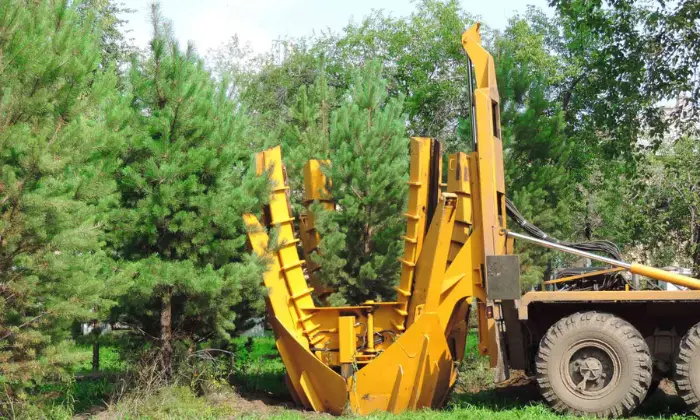Welcome to I Haul Landscape Services, where we address the pivotal question: Can You Plant a Tree Where One Was Removed? Our commitment extends beyond landscaping; it’s a journey into sustainable rejuvenation. In this exploration, we navigate the intricate balance of nature, expertise, and environmental responsibility. Discover with us the possibilities, considerations, and expertise needed to breathe life into spaces where trees once stood. With I Haul Landscape Services, the answer to Can You Plant a Tree Where One Was Removed? unfolds as a promise – a promise of greener, thriving landscapes and a harmonious coexistence with nature.
Understanding Tree Removal and Replanting
Welcome to the green realm of I Haul Landscape Services, where the balance between nature and urban living is meticulously curated. In the world of landscaping, the delicate choreography of tree removal and replanting unfolds, embodying our commitment to sustainable practices. As stewards of the environment, we navigate the intricacies of soil conditions, tree species, and the reasons behind each removal, ensuring a seamless transition toward a greener horizon.
The Tree Replanting Process
When considering tree replanting, several key factors must be taken into account:
Choosing the Right Tree Species
Before replanting, it’s essential to select a tree species that is well-suited to the local climate, soil conditions, and ecosystem. Native trees are often the best choice as they are adapted to the specific environmental conditions of the region.
Preparing the Planting Site
The site where the tree was removed must be adequately prepared for replanting. This involves assessing the soil quality, drainage, and sunlight exposure. If the tree was removed due to disease, it’s crucial to address any issues in the soil that may have contributed to the problem.
Timing of Replanting
The timing of tree replanting is crucial. Planting during the appropriate season ensures that the tree has the best chance of establishing itself. In some cases, it may be beneficial to wait for a certain period before replanting in the same spot.
Root System Considerations
If the tree was removed due to issues with its root system, it’s essential to consider these factors when replanting. Proper spacing and depth are crucial to the successful establishment of the new tree.
Can You Replant a Tree in the Same Spot?
One of the common questions that arise is whether it’s possible to replant a tree in the same spot where one was removed. The answer depends on various factors:
Soil Quality
If the soil quality is conducive to tree growth and the previous tree’s removal was not due to soil-related issues, replanting in the same spot can be a viable option.
Disease or Pest Concerns
If the previous tree was removed due to disease or pest infestation, replanting the same species in the same location may not be advisable. It’s essential to address the underlying issues and, if necessary, choose a different species resistant to the specific problem.
Root Decomposition
The decomposition of the previous tree’s roots can affect the soil structure. In such cases, it may be necessary to remove old roots and prepare the soil adequately before replanting.
How Close Can You Plant a Tree to a Stump?
The proximity of a new tree to the stump of a removed tree is a critical consideration. Planting too close can lead to competition for resources and hinder the new tree’s growth. Best practices for planting near a stump include:
Adequate Spacing
Maintain a sufficient distance between the new tree and the stump to allow for healthy root development without competition for nutrients.
Stump Removal
If feasible, consider removing the stump entirely to provide a clean slate for the new tree’s root system.
Soil Amendments
Amend the soil around the stump with organic matter to enhance its fertility and structure, providing a better environment for the new tree.
Conclusion
In conclusion, the question, Can you plant a tree where one was removed? is not a simple yes or no. Successful tree replanting requires careful consideration of various factors, including soil quality, species selection, and proper site preparation. By following best practices and understanding the unique conditions of the planting site, individuals can contribute to the ongoing sustainability and health of our environment. Tree removal may be a necessity at times, but the act of replanting ensures that the cycle of growth and ecological balance continues.
(FAQs)
Can You Plant A Tree Where One Was Removed?
Yes, it is possible to plant a tree where one was removed. However, several factors need to be considered, including soil quality, the reason for the previous tree’s removal, and proper site preparation.
What Is The First Step In The Tree Replanting Process?
The first step is to choose the right tree species that is well-suited to the local climate, soil conditions, and ecosystem. Native trees are often recommended for their adaptability.
How Do You Prepare The Planting Site For Tree Replanting?
Preparing the planting site involves assessing soil quality, drainage, and sunlight exposure. Addressing any soil-related issues and ensuring proper spacing and depth for the new tree are crucial steps.
When Is The Best Time To Replant A Tree?
The timing of replanting is crucial. It is generally recommended to plant trees during the appropriate season for the chosen species to ensure successful establishment.
Is It Advisable To Replant The Same Tree Species In The Same Spot?
It depends on the reason for the previous tree’s removal. If the removal was due to disease or pest infestation, replanting the same species may not be advisable. Choosing a species resistant to the specific problem is recommended.

